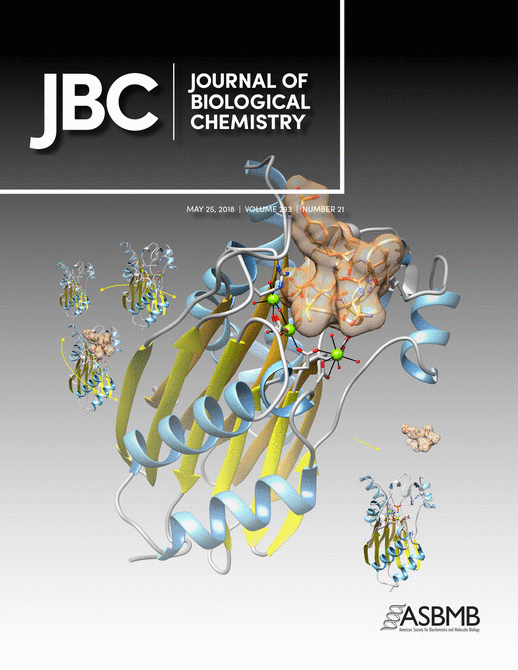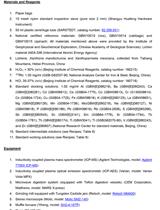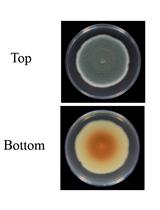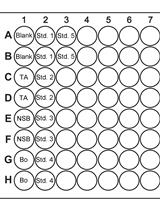- EN - English
- CN - 中文
Determination of the Cellular Ion Concentration in Saccharomyces cerevisiae Using ICP-AES
ICP-AES法测定酿酒酵母细胞离子浓度
发布: 2020年08月20日第10卷第16期 DOI: 10.21769/BioProtoc.3727 浏览次数: 3340
评审: Arvind PandayFabian den BraveFernando A Gonzales-Zubiate
Abstract
The yeast Saccharomyces cerevisiae has been perceived over decades as a highly valuable model organism for the investigation of ion homeostasis. Indeed, many of the genes and biological systems that function in yeast ion homeostasis are conserved throughout unicellular eukaryotes to humans. In this context, measurement of the yeast cellular ionic content provides information regarding yeast response to gene deletion or exposure to chemicals for instance. We propose here a protocol that we tested for the analysis of 12 elements (Ba2+, Ca2+, Cd2+, Co2+, Cu2+, Fe2+, K+, Mg2+, Mn2+, Na+, Ni2+, Zn2+) in yeast using Inductively Coupled Plasma-Atomic Emission Spectrometry (ICP-AES). This technique enables determination of the cellular content of numerous ions from one biological sample.
Keywords: Ion content (离子含量)Background
Yeast has been extensively used to study the ionic response after gene deletion, modification of the extracellular environment, or heterologous protein production for example. In this context, having methods to monitor the ionic status of yeast cells is of high interest. ICP-AES uses high-energy plasma from an inert gas like argon to burn analytes very rapidly. The color that is emitted from the analyte is indicative of the elements present, and the intensity of the spectral signal is indicative of the concentration of these elements. Compared with other techniques (for example spectrophotometric methods, atomic absorption spectrometry and atomic fluorescence spectrometry), ICP-AES is a multi-ion analysis method involving simple and fast procedure with relatively low detection limits (Dahlquist and Knoll, 1978). The method described here applies to concentration determination of Ba2+, Ca2+, Cd2+, Co2+, Cu2+, Fe2+, K+, Mg2+, Mn2+, Na+, Ni2+, and Zn2+, with the possibility of measurement of numerous cellular ionic concentrations from one 100 ml yeast culture (Eide et al., 2005; Thines et al., 2018). While this protocol has been tested in our laboratory for these twelve ions, this protocol could most likely be transferred to other elements. Besides, although described here for whole-cell measurement of the yeast ionic content, this method could be transferred to other cell types or to isolated organelles by fractionation on sucrose gradient for instance.
Materials and Reagents
- Petri dishes (Sigma-Aldrich, catalog number: P5606-400EA )
- Toothpicks
- 5 ml pipette (Gilson, catalog number: F123607 )
- 25 mm diameter Whatman® glass microfiber filters, grade GF/F (GE Healthcare, catalog number: 1825-025 )
- Saccharomyces cerevisiae strains to be analyzed (performed here on BY4741 or BY4742 S. cerevisiae strains)
- Yeast extract KAT (Ohly, catalog number: OHLY® KAT)
- Glucose (Merck, catalog number: 1083469029 )
- EGTA (Acros Organic, catalog number: 409910250 )
- HCl 37% (VWR, catalog number: 20255.29 )
- Suprapur® nitric acid 65% (Merck, catalog number: 100441 )
- Certipur® single-element standards for inductively coupled plasma spectroscopy (Merck, catalog number: depends on the ion to be analyzed)
- Milli Q water
- NaOH (Sigma-Aldrich, catalog number: S5881 )
- YD plates (see Recipes)
- YD medium (see Recipes)
- 1 mM EGTA (1 L) (see Recipes)
Equipment
- 500 ml Erlenmeyer (VWR, catalog number: 734-1833 )
- 250 ml glass beakers (VWR, catalog number: 213-1124P )
- 100 ml graduated cylinders (VWR, catalog number: 612-3836 )
- HaldenwangerTM porcelain crucibles (Thermo Fisher Scientific, catalog number: 12306507 )
- Analytical balance (Mettler Toledo, catalog number: AB104-S )
- Filter holding manifold (Hoefer, catalog number: FH225V )
- Laboratory oven (Utest, catalog number: UTD )
- Desiccator (VWR, catalog number: 467-0071P )
- Carbolite® muffle furnace (Sigma-Aldrich, catalog number: Z654973 )
- iCAP 6500 ICP-OES CID spectrometer (Thermo Fisher Scientific, discontinued)
Procedure
文章信息
版权信息
© 2020 The Authors; exclusive licensee Bio-protocol LLC.
如何引用
Readers should cite both the Bio-protocol article and the original research article where this protocol was used:
- Thines, L., Iserentant, A. and Morsomme, P. (2020). Determination of the Cellular Ion Concentration in Saccharomyces cerevisiae Using ICP-AES. Bio-protocol 10(16): e3727. DOI: 10.21769/BioProtoc.3727.
- Thines, L., Deschamps, A., Sengottaiyan, P., Savel, O., Stribny, J. and Morsomme, P. (2018). The yeast protein Gdt1p transports Mn2+ ions and thereby regulates manganese homeostasis in the Golgi. J Biol Chem 293(21): 8048-8055.
分类
微生物学 > 微生物生物化学 > 其它化合物
细胞生物学 > 基于细胞的分析方法 > 离子分析
生物化学 > 其它化合物 > 离子
您对这篇实验方法有问题吗?
在此处发布您的问题,我们将邀请本文作者来回答。同时,我们会将您的问题发布到Bio-protocol Exchange,以便寻求社区成员的帮助。
Share
Bluesky
X
Copy link














